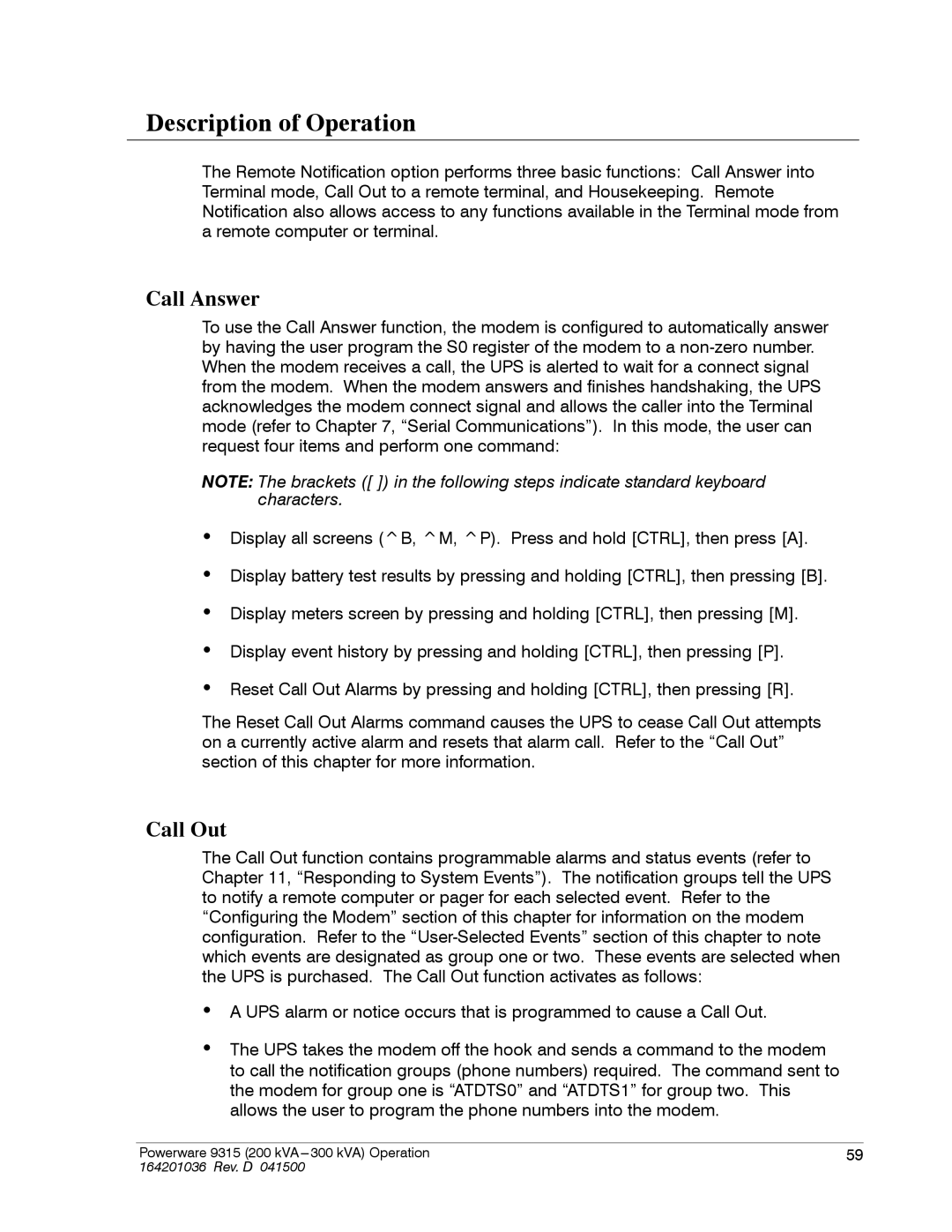Description of Operation
The Remote Notification option performs three basic functions: Call Answer into Terminal mode, Call Out to a remote terminal, and Housekeeping. Remote Notification also allows access to any functions available in the Terminal mode from a remote computer or terminal.
Call Answer
To use the Call Answer function, the modem is configured to automatically answer by having the user program the S0 register of the modem to a
NOTE: The brackets ([ ]) in the following steps indicate standard keyboard characters.
·Display all screens (^B, ^M, ^P). Press and hold [CTRL], then press [A].
·Display battery test results by pressing and holding [CTRL], then pressing [B].
·Display meters screen by pressing and holding [CTRL], then pressing [M].
·Display event history by pressing and holding [CTRL], then pressing [P].
·Reset Call Out Alarms by pressing and holding [CTRL], then pressing [R].
The Reset Call Out Alarms command causes the UPS to cease Call Out attempts on a currently active alarm and resets that alarm call. Refer to the “Call Out” section of this chapter for more information.
Call Out
The Call Out function contains programmable alarms and status events (refer to Chapter 11, “Responding to System Events”). The notification groups tell the UPS to notify a remote computer or pager for each selected event. Refer to the “Configuring the Modem” section of this chapter for information on the modem configuration. Refer to the
·A UPS alarm or notice occurs that is programmed to cause a Call Out.
·The UPS takes the modem off the hook and sends a command to the modem to call the notification groups (phone numbers) required. The command sent to the modem for group one is “ATDTS0” and “ATDTS1” for group two. This allows the user to program the phone numbers into the modem.
Powerware 9315 (200 kVA | 59 |
164201036 Rev. D 041500 |
|
